Origins of Aquaponics
– by Colle and Phyllis Davis
Portable Farms® Aquaponics Systems are easier and more productive than dirt gardening or traditional agriculture and uses less water, less electricity and less labor than any other aquaponics system in the world.
Please note that aquaponics does not grow ‘field crops’ such as rice, wheat, corn or root vegetables, but it DOES grow table greens and many blooming plants (not all, but some) such as tomatoes, peppers, cucumbers and beans.
Aquaponics with Portable Farms® Aquaponics Systems
— Build, own and operate your own backyard aquaponics system.
— Feed a family of eight year round with one module of Portable Farms® Aquaponics System.
— Start a commercial aquaponics installation by installing twenty to thirty modules and sell the food you grow.
The Portable Farms® Aquaponics Systems duplicate what nature has been doing for billions of years. The water, containing the fish waste, is pumped out of the fish tanks to a settling tank, where the solids settle to the bottom of the tank while the nutrient-rich water then flows, by gravity, through a series of trays where the plants are growing, and then back into the fish tanks. The small amount of separated fish-waste water in the settling tank is drained off at regular intervals, and can be used to fertilize crops such as trees, ornamentals or lawns. The cycle of the water flowing through the system repeats itself several times each day. Some make-up water has to be added at regular intervals to compensate for the water used in the settling tank cleaning, and for the water used by the plants for growth (transpiration). And, that’s how the system works. Simple, elegant and with very little energy to produce high quantities of locally grown food.
Learn more about owning your own Portable Farms® Aquaponics System
Aquaponics has been explored for several decades as a possible solution to the foregoing environmental, energy and food shortage problems. Aquaponics combines the art of growing aquatic animals (fish), known as aquaculture, with the modern technology of hydroponics in which plants are grown without soil. In aquaponics, fish and plants are grown together in an integrated closed loop re-circulating system with a very low rate of water usage or water loss due to evaporation. This symbiotic relationship between the fish and the growing plants is the goal of aquaponics by creating a sustainable ecosystem in which both fish and plants can thrive and as a result, produces safe, fresh protein and healthy vegetables.
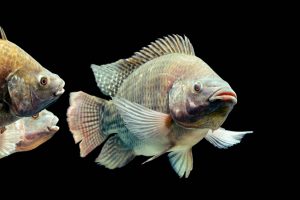
Oreochromis Mossambicus Tilapia. This is the male tilapia used in aquaponics systems in the Northern Hemisphere.
To work efficiently, Portable Farms® Aquaponics Systems require ‘warm water, fresh water fish’ of some kind to provide the essential waste and their nutrients for your plants. Generally, aquaponics systems use warm-water fish instead of cold-water fish (like trout) because the plants don’t like the cold water.
Aquaponics is the growing of fish, or other water-based animals, along with land plants in a controlled environment, to maximize the use of the energy and nutrients in the system in order to harvest the greatest amount of vegetables and fish protein from the system.
The word aquaponics comes from words aquaculture, which is the cultivation of fish or other `water- based animals, and the word hydroponics, where plants are grown in a sterile medium or completely in water.
By combining the fish, water and plants, Portable Farms® Aquaponics Systems use an integrated environment to produce vegetables and fish in very small space, with very little water.
Aquaponics has its roots in ancient China and parts of the aquaponics system were developed in other areas of the world where high concentrations of people lived who were observant of the relationships that existed naturally in their environment.
In China, farmers knew that land livestock waste could be added to their fields or ponds to increase production of vegetables and fruit bearing plants. They also noticed that different fish had different tolerances to the level of land-animal waste in their water. For example too much pig or chicken waste caused many fish to die (the modern explanation for this is lack of oxygen) so they were careful about balancing their system for maximum yield and minimum fish loss.These Chinese farmers were able to refine their systems so they could grow chickens in pens above pigs, (with the waste dropping through along with any spilled food) who were in a pen over a pond with carp in it, and then the water flowed to another pond with other less tolerant fish such as catfish, and perhaps other aquatic animals and certainly other water plants were grown and harvested. These systems were so called flow-through systems, meaning that water was used once through the ponds, and then released to the local paddies, streams, lakes or ocean. The sludge from the bottom of the ponds was used on the fields and some of the water was used in the paddies for fertilizer before it was released.
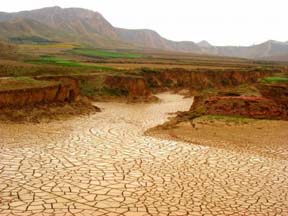 In the twenty-first century, the world faces an environmental crisis, issues related to climate change (drought and flooding as well as record-setting heat waves) and an energy crisis. In addition, many parts of the world face severe food shortages. Twentieth century agricultural techniques have harmed the environment and consume an inordinate amount of energy and water. Many countries lack the large amounts of arable land and water needed to sustain growing human populations. Developed nations use large amounts of pesticides and artificial fertilizers to grow their grains, fruits, and vegetables. At the same time, they use huge amounts of gasoline and diesel fuel to power their farm machinery, large amounts of electricity to process their food, and enormous amounts of fuel to deliver the processed food to grocery stores. The raising of farm animals, particularly cattle and swine, is notoriously inefficient in terms of the amount of land and energy required to raise corn and other animal
In the twenty-first century, the world faces an environmental crisis, issues related to climate change (drought and flooding as well as record-setting heat waves) and an energy crisis. In addition, many parts of the world face severe food shortages. Twentieth century agricultural techniques have harmed the environment and consume an inordinate amount of energy and water. Many countries lack the large amounts of arable land and water needed to sustain growing human populations. Developed nations use large amounts of pesticides and artificial fertilizers to grow their grains, fruits, and vegetables. At the same time, they use huge amounts of gasoline and diesel fuel to power their farm machinery, large amounts of electricity to process their food, and enormous amounts of fuel to deliver the processed food to grocery stores. The raising of farm animals, particularly cattle and swine, is notoriously inefficient in terms of the amount of land and energy required to raise corn and other animal
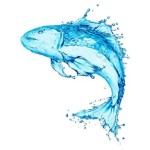
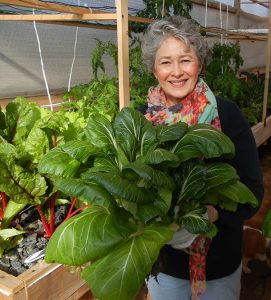
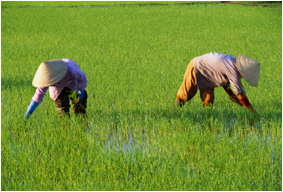
2 comments
I am seriously interested in this type of vegetable and fruit growing. BUT, I don’t like Tilipia and my family wont eat it either. So what other kinds of fish could be farmed like this? Seriously interested.
Laura Dylla
Author
Laura,
You can use catfish, goldfish, carp and crayfish in the PFAS. You can actually use almost any warm water, freshwater fish and herbivores or omnivores are easiest to work with in aquaponics.
We look forward to having you as a student.
Colle Davis – Inventor